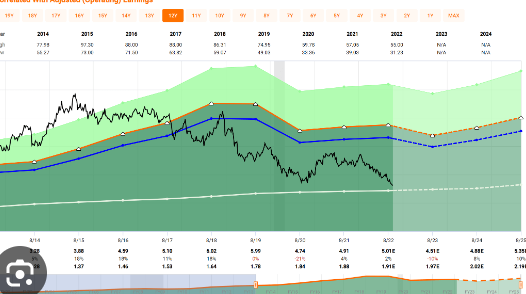Introduction:
Walgreens, a renowned name in the retail pharmacy industry, has been a prominent player in the stock market for decades. As the company continues to adapt and expand its offerings, investors find themselves drawn to its potential for growth and stability. This article aims to delve into the various aspects of Walgreens stock, analyzing its historical performance, current standing, and future prospects. By understanding the company’s financials, strategies, and market conditions, investors can make informed decisions about including Walgreens in their portfolios.
Section 1: The Evolution Of Walgreens Stock:
1.1 Early Days and Expansion: Founded in 1901 by Charles R. Walgreen Sr., the first  store emerged as a corner pharmacy in Chicago. Over the years, the company expanded its footprint through acquisitions and organic growth, transforming into a national and eventually international retail giant.
store emerged as a corner pharmacy in Chicago. Over the years, the company expanded its footprint through acquisitions and organic growth, transforming into a national and eventually international retail giant.
1.2 Historical Performance: An analysis of Walgreens’ historical stock performance reveals its resilience in the face of economic challenges. Despite facing headwinds during economic downturns, the company has demonstrated its ability to recover and thrive.
1.3 Impact of Market Trends: The pharmaceutical industry is influenced by various market trends, such as changes in healthcare policies, advancements in medicine, and consumer preferences. This section explores how these trends have affected Walgreens’ stock performance over the years.
Section 2: Financial Health And Fundamentals:
2.1 Revenue and Earnings: A fundamental aspect of any stock analysis is the evaluation of the company’s revenue and earnings. This section examines Walgreens’ revenue streams, profitability, and earnings growth trajectory.
2.2 Debt and Liquidity: An analysis of Walgreens’ debt levels and liquidity helps investors understand the company’s financial stability and ability to manage short-term obligations.
2.3 Dividends and Share Buybacks: Walgreens has a history of rewarding its shareholders through dividends and share buyback programs. This section delves into the significance of these distributions and their impact on the stock’s attractiveness.
Section 3: Competitive Landscape And Growth Strategies:
3.1 Competitors’ Analysis: Walgreens operates in a highly competitive market. Here, we assess its major competitors and how they affect the company’s market positioning and growth opportunities.
3.2 Diversification and Expansion: To sustain growth, Walgreens has diversified its services and ventured into new markets. This section explores the company’s expansion strategies and their potential impact on its stock performance.
3.3 Embracing Technology: In the digital age, technology adoption is crucial for businesses. We evaluate Walgreens’ efforts in leveraging technology to improve customer experience and operational efficiency.
Section 4: Challenges And Risks:
4.1 Regulatory Environment: The pharmaceutical industry is subject to strict regulations. This section examines how changes in healthcare policies and regulations could affect Walgreens’ business operations and stock performance.
4.2 Health and Economic Concerns: External factors, such as global health crises and economic uncertainties, can significantly impact companies like Walgreens. We analyze how such events could influence the company’s stock performance.
FAQs:
FAQ 1: Is Walgreens stock a safe long-term investment?
Answer: While past performance does not guarantee future results, Walgreens has displayed resilience and growth potential. Its consistent dividend payments and market presence make it an attractive option for long-term investors seeking stability.
FAQ 2: What are the potential growth catalysts for Walgreens?
Answer: Walgreens’ growth prospects lie in its expansion into new markets, digital transformation, and strategic partnerships with healthcare providers. Additionally, the rising demand for healthcare services and products could drive the company’s growth in the coming years.
Conclusion:
Walgreens, with its long-standing presence in the pharmaceutical industry, continues to be an appealing stock option for investors. Through an analysis of its historical performance, financial health, growth strategies, and potential challenges, investors can make informed decisions about including Walgreens in their investment portfolios. While there are risks associated with any investment, the company’s ability to adapt to changing market dynamics and its commitment to customer service could position it well for the future. As always, it is essential for investors to conduct their due diligence and consult with financial advisors before making any investment decisions.

